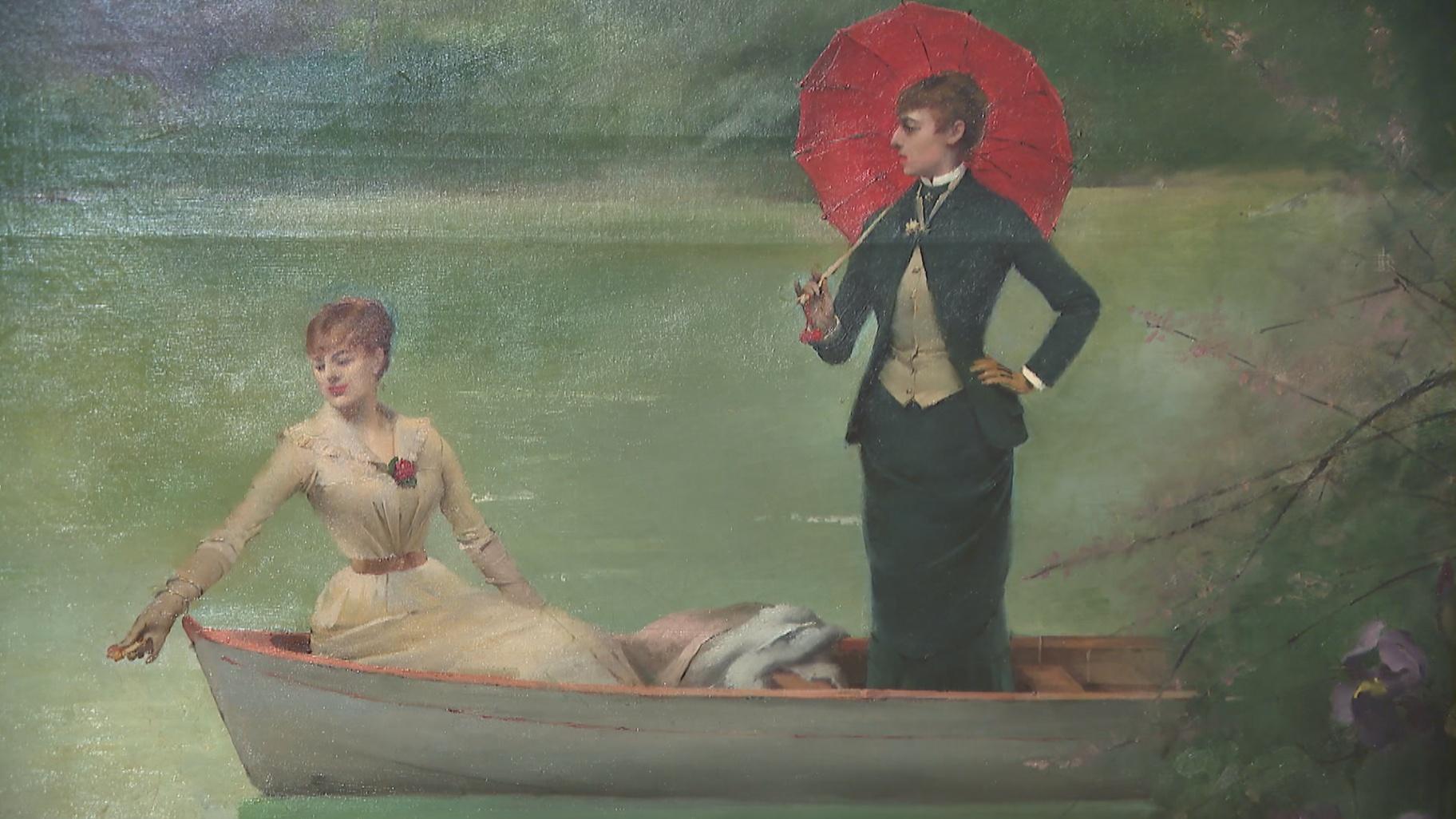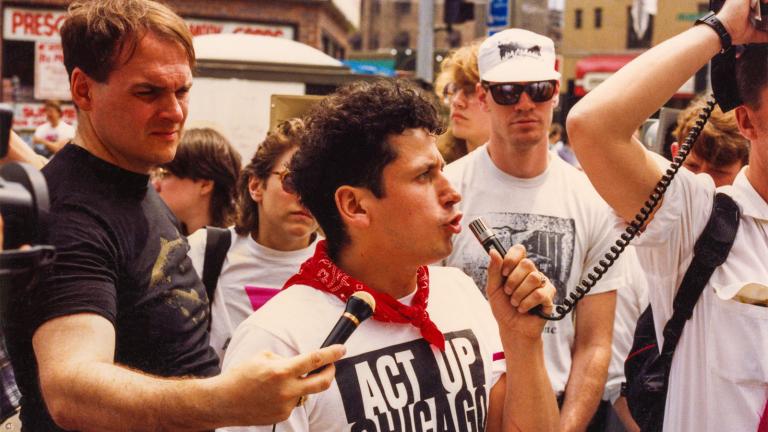Romance, gender and sexuality are newly framed in an art show at a Chicago exhibition space.
Called “The First Homosexuals,” the show is about a time when the art world released a flood of new representations of same-sex desire. The exhibition at Wrightwood 659, 659 W. Wrightwood Ave., runs through Dec. 17.
“You’re going to see work that looks a lot like our contemporary version of queerness, which is to say that includes what we would in the old days call ‘gay and lesbian art.’ But it also includes a whole range of work that plays with gender, that includes transness,” said curator Jonathan Katz. “In fact, we’re showing one of the very earliest works of trans art ever and so what we’re seeing is actually something that I think a lot of people are a bit surprised by, which is that we didn’t invent the idea of queerness. It’s not a contemporary idea.”
The show presents art beginning in 1869 for a reason.
“In 1869 the word ‘homosexual’ was actually coined, and it was the first term to essentialize an identity, to make a person who was inclined to same-sex acts have a deep, interior core that was distinctly different from heterosexuals,” Katz said. “Up until that point, homo and heterosexuality existed along a continuum. They were both forms of sexuality and they were understood as functionally the same. One was of course prohibited and one was celebrated, but they were all forms of sexuality. With the creation of ‘the homosexual’ all of a sudden sexuality took a binary cast.”
As language around sexuality changed, art took up the slack, Katz says.
“Art started to be the place where all forms of sexual difference that language could no longer actually name, couldn’t speak to, emerged,” Katz said.
 An art exhibition at Wrightwood 659 depicts same-sex desire. (WTTW News)
An art exhibition at Wrightwood 659 depicts same-sex desire. (WTTW News)
There are dual portraits from artists who were lovers. And coded imagery that suggests more than meets the eye, including a painting of the celebrated actress Sarah Bernhardt by her partner, French artist Louise Abbéma.
“What Abbéma does in the image is include two black swans among a field of white swans and thus, in a kind of coded way, suggesting the intimacy and the difference of their partnership from the norm,” Katz said.
“Salutat” is an unexpected painting of a boxer by the great American painter Thomas Eakins. The work was created in 1898 when the word “homosexual” was not in wide use in the U.S.
“And this is the queerest kind of boxing picture in that the point of a boxing picture was to show blood and sweat and masculine aggression, not of that is in evidence here,” Katz said.
Katz said one of the things the exhibition hopes to accomplish is changing the binary idea of sexuality.
“One of the things I’ve been trying to do in all my exhibitions is to underscore that the idea of ‘gay and lesbian’ is a binary construct, is of a historically delimited nature,” Katz said. “And before it and now after it, sexuality is sexuality and it isn’t so easily binarized.”







